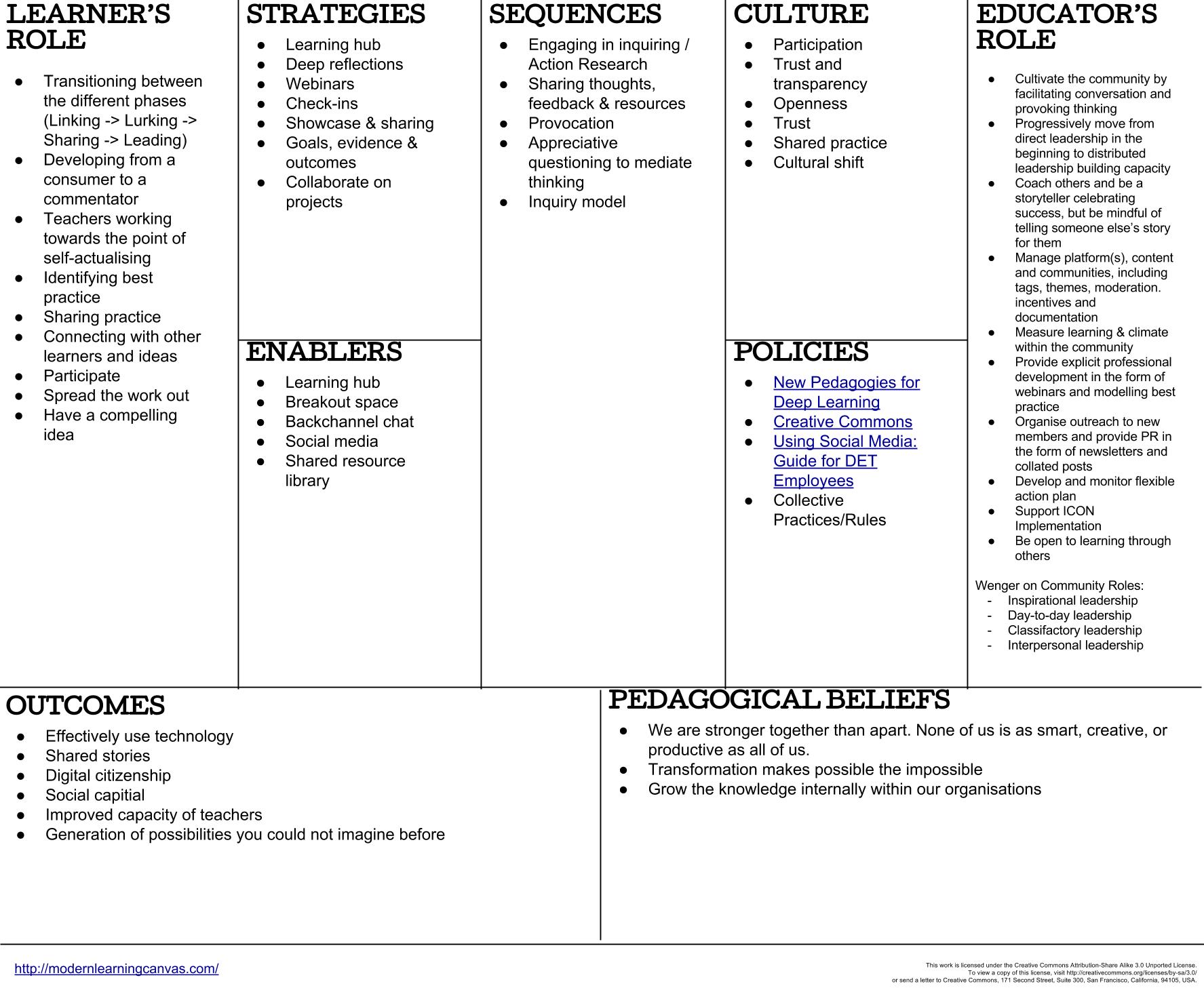
flickr photo shared by mrkrndvs under a Creative Commons ( BY-SA ) license
I have been spending a bit of time lately with the idea of communities of practice. One of the things that becomes clear quickly is that there are many different definitions and descriptions.
Etienne and Beverly Wenger-Trayner suggest that:
Communities of practice are formed by people who engage in a process of collective learning in a shared domain of human endeavour: a tribe learning to survive, a band of artists seeking new forms of expression, a group of engineers working on similar problems, a clique of pupils defining their identity in the school, a network of surgeons exploring novel techniques, a gathering of first-time managers helping each other cope.
While Lani Ritter Hall and Sheryl Nussbaum-Beach describe it as follows:
Communities of practice (or inquiry) are systems of collective critical inquiry and reflection focused on building a shared identity and a collective intelligence garnered over time. Members have a “none of us is as good as all of us” mentality.
Touching on the role of communities, Tony Bates explains that:
The basic premise behind communities of practice is simple: we all learn in everyday life from the communities in which we find ourselves. Communities of practice are everywhere. Nearly everyone belongs to some community of practice, whether it is through our working colleagues or associates, our profession or trade, or our leisure interests, such as a book club.
A report by the US government highlight some of the benefits:
Past research has already suggested that, if designed, implemented, and supported well, online communities of practice can help educators strengthen their performance. Through these online social learning spaces, evidence shows that educators can effectively access, share, and create knowledge, as well as strengthen their commitment to the profession
In there discussion of teaching crowds, Jon Dron and Terry Anderson explain that:
The concept, drawn from anthropological studies, relates to how newcomers to a collection of people, such as a department in a firm, a university, or a group of charity workers, learn the group’s practices and become participants in the community.
One of the problems with each of these definitions and descriptions is that they do not necessarily capture the nuance of each context. Another way of making sense of communities of practice is using the Modern Learning Canvas:
One of the benefits of the canvas is that it provides a structure to talk about learning. Starting with a description of an ideal community, you can then make changes to the canvas based on the needs and purpose of particular situation. For when I think about the communities that I have participated in, whether they be MOOCs (Rhizo14, ccourses, digiwrimo, CLMOOC etc …) or professional learning programs (TL21C), they were all different. They all appraoched things differently, providing for different needs.
So what about you, have you had any experiences with communities of practice? As always, I would love to know.
If you enjoy what you read here, feel free to sign up for my monthly newsletter to catch up on all things learning, edtech and storytelling.
Defining a Community of Practice by Aaron Davis is licensed under a Creative Commons Attribution-ShareAlike 4.0 International License.


@mrkrndvs @snbeach I’d be interested to know if and how the learning design changes as leaners transition from linking to lurking to …
I love the synergy of working in a group. It requires that everyone’s voice is respected and heard. The collective is stronger than the strongest alone. I very much agree with the stated pedagogical beliefs.
Agree Norah, there are so many benefits to be gained.
@mrkrndvs @richardolsen Just asked to write another book on this very topic. Interested in both of your takes on some of this to include.
If we agree that coaching doesn’t require formal PD then sure 🙂